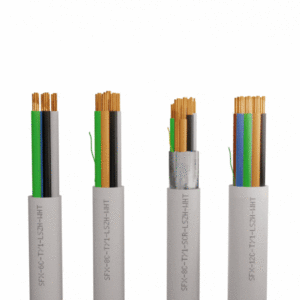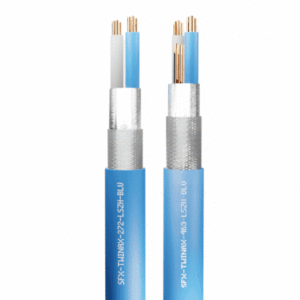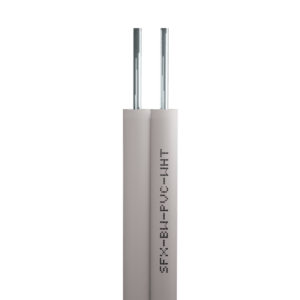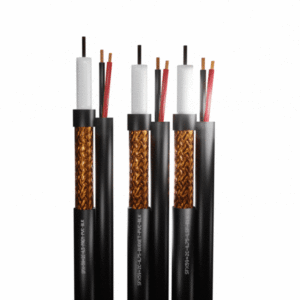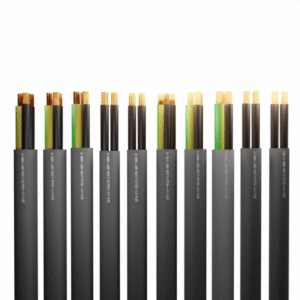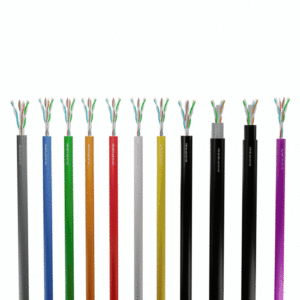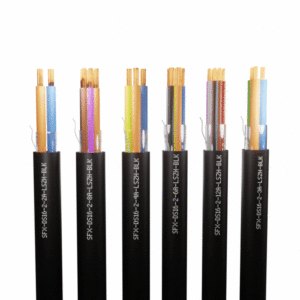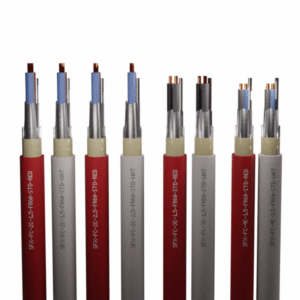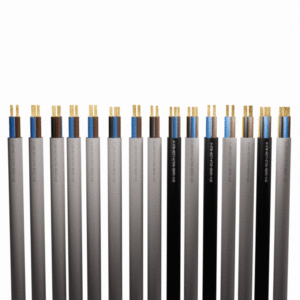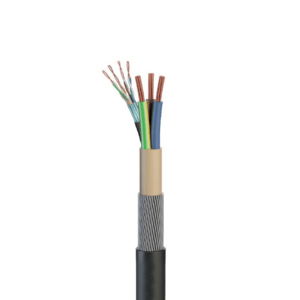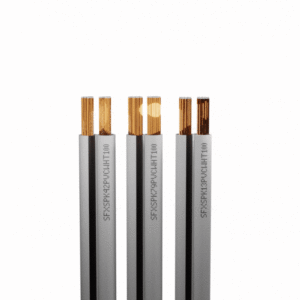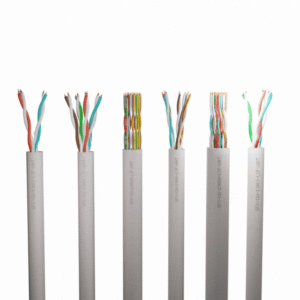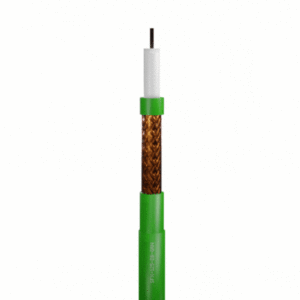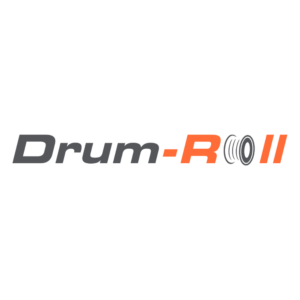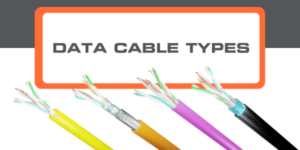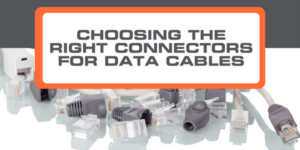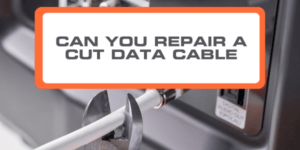A Guide for Your Specific Data Cable Needs: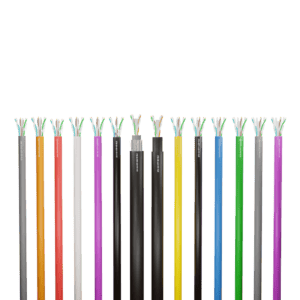
In today’s electrical world, data cables play a crucial role in enabling seamless communication and efficient data transfer.
Understanding the important factors for selecting the correct data cable is crucial when creating a home network, office, or data centre.
It is important to consider these factors in order to ensure the efficiency and reliability of the network. Without a proper understanding of these factors, the network may experience issues such as slow speeds, frequent disconnections, and data loss.
Therefore, it is essential to research and choose the appropriate data cable that meets the specific requirements of the network.
This guide will walk you through key considerations such as;
- Data transfer speed requirements.
- Length of cable limitations.
- Environmental factors.
- Compatibility with networking equipment.
- Additional cable categories, to help you make an informed decision for your specific applications.
Data Transfer Speed Requirements:
The first step in choosing data cables is assessing your data transfer speed requirements.
Different data cable types offer varying speeds, and understanding these options is crucial:
Cat5e Cable
- Cat5e is ideal for basic network setups with data transfer rates up to 1 Gbps (Gigabit per second).
- Widely used for home networks, small offices, and general data applications.
- Delivers a Maximum Performance of 100Mhz.
Cat6 Cable
- Provides higher bandwidth with data transfer rates up to 10 Gbps.
- Cat6 is suitable for demanding applications and future-proofing your network.
- Commonly used in business environments and small to medium-sized data centres.
- Delivers a Maximum Performance of 250Mhz.
Cat6a Cable
- Supports data transfer speeds up to 10 Gbps over longer distances.
- Suitable for larger network infrastructures and data centres.
- Cat6a is well-suited for high-performance applications and environments with higher bandwidth requirements.
- Delivers a Maximum Performance of 500Mhz.
Cat7 & Cat7a Cables
- These cables offer even higher data transfer speeds, reaching up to 10 Gbps and 40 Gbps, respectively.
- Designed for specialised applications that demand ultra-fast data transmission.
- Cat7 & Cat7a is Suitable for use in data centres, high-performance computing, and industrial settings.
- Delivers a Maximum Performance of 1000Mhz.
Cat 8 Cable
- Offers lightning-fast data transfer speeds up to 25 Gbps or even 40 Gbps.
- Specifically designed for high-performance data centres and enterprise applications.
- Cat 8 cables are becoming increasingly popular for data-intensive tasks and large-scale networking requirements.
- Delivers a Maximum Performance of 2000Mhz.
Understanding your data speed needs and the capabilities will help you choose the most suitable option for your specific applications.
Length of Data Cable Limitations:
Data cables have length limitations, beyond which signal degradation can occur.
It is essential to consider the distance between devices and the networking equipment when choosing the right cable.
Cat 5e, Cat 6, and Cat 6a cables can reliably transmit data up to 100 metres. These cable categories are well-suited for most applications within a building or office environment.
Cat 7 and Cat 7a cables, designed for specialised applications, can also transmit data up to 100 metres.
Cat 8 cables however, have a higher data transfer speed and are therefore designed for shorter distances, typically up to 30 metres in length.
For longer distances, you may want to consider using appropriate signal boosters or fibre optic cables, which offer longer transmission distances whilst maintaining performance.
Fibre optic cables, in particular, can transmit data over much greater distances, making them suitable for longer networking and connections between different buildings.
Environmental Considerations:
Environmental factors can significantly impact the performance and durability of data cables.
You will need to consider the following environmental aspects when choosing suitable data cables:
Indoor vs. Outdoor Use
- Choose cables rated for either indoor or outdoor use, depending on your installation requirements.
- External cables, typically manufactured using polyethylene are designed to withstand exposure to harsh weather conditions, UV radiation, and other environmental factors.
- There are a range of internal sheathed data cables such as PVC & LSZH which can be used within different installation environments.
Temperature and Humidity
- Verify that the chosen cables can operate within the temperature and humidity range of your installation environment.
- Extreme temperature variations or high humidity levels can affect cable performance and longevity.
Chemical and Oil Resistance
- For industrial or specialised applications, consider cables with enhanced resistance to chemicals and oils.
- These cables are designed to withstand exposure to harsh chemicals or oil spills, ensuring continuous data transmission in demanding environments.
Compatibility with Networking Equipment:
- Ensure that the selected data cables are compatible with your networking equipment, including switches, routers, and network adapters.
- Most modern networking equipment supports a wide range of cable categories, but it is essential to verify compatibility for optimal performance.
- Using cables that match the capabilities of your networking equipment ensures smooth and reliable data transmission.
Shielding and Crosstalk:
Shielding is an essential consideration, especially in environments where electromagnetic interference (EMI) or radio frequency interference (RFI) is present.
Shielded cables, also know as FTP (Foil Twisted Pair) and SFTP (Shielded Foil Twisted Pair), are designed to reduce external interference, minimising crosstalk and signal loss.
These cables are commonly used in industrial settings, data centres, and areas with high levels of electrical noise.
Unshielded cables, also known as UTP (Unshielded Twisted Pair), are suitable for most residential and office environments, where the likelihood of interference is lower.
If you plan on running data cables near power lines, machinery, or other sources of interference, you will need to consider using shielded cables to ensure reliable data transmission.
Cost and Budget Considerations:
While it’s essential to choose data cables that meet your performance requirements, cost considerations also play a role in the decision-making process.
- Cat 5e cables are generally the most budget-friendly option, making them a popular choice for basic home networks and small offices.
- Cat 6, Cat 6a, and Cat 7 tends to increase the cost due to higher performance capabilities and construction quality.
- Cat 8 Ethernet cables are currently the most expensive option due to their cutting-edge technology and lightning-fast data transfer speeds.
Before making a decision, carefully evaluate your data speed and performance needs to strike a balance between performance and budget.
Application-Specific Considerations:
Different applications have unique data cable requirements based on their specific demands and constraints.
Here are some application-specific considerations to keep in mind:
Data Centres
- Data centres demand high-performance data cables capable of handling massive amounts of data and ensuring minimal data loss.
- Cat 6a, Cat 7, and Cat 8 cables are popular choices in data centre environments, where efficiency and reliability are critical.
Industrial Environments
- Industrial settings often present challenging conditions, such as high temperatures, vibrations, and exposure to chemicals.
- Shielded cables with enhanced durability are well-suited for industrial applications, ensuring reliable data transmission in adverse environments.
Home Networks
- For typical home networks and casual internet usage, Cat 5e cables are generally sufficient.
- If you have multiple devices connected to your network or engage in data-intensive activities such as gaming or media streaming, upgrading to Cat 6 or higher can provide a noticeable improvement in performance.
Office Environments
- In office settings, Cat 5e and Cat 6 cables are commonly used due to their cost-effectiveness and ability to support typical office applications.
Conclusion
Choosing the right data cables is critical to achieving efficient and reliable data transmission in any network setup.
By carefully considering factors such as data transfer speed requirements, cable length limitations, environmental factors, compatibility with networking equipment, shielding and crosstalk considerations, cost and budget constraints, and application-specific needs, you can make an informed choice that meets your unique data connectivity requirements.
Whether you are building a home network, expanding an office infrastructure, or designing a data centre, the right data cables will ensure seamless communication and enhanced productivity.
By staying informed about the latest advancements in cable technology and understanding the unique demands of your applications, you can future-proof your network and ensure it remains reliable and efficient for years to come.
Remember to consult with experienced network professionals or cable experts to get personalised advice based on your specific needs and circumstances.
In conclusion, investing in high-quality data cables that match your network requirements is an essential step towards building a robust and reliable data communication infrastructure.
By following the guidelines in this comprehensive guide, you can make an informed decision that optimises data transfer speeds, supports future growth, and enhances overall network performance.
If you have any questions that weren’t answered in this article, please do not hesitate to get in touch with our friendly team.
We’re always happy to help!

